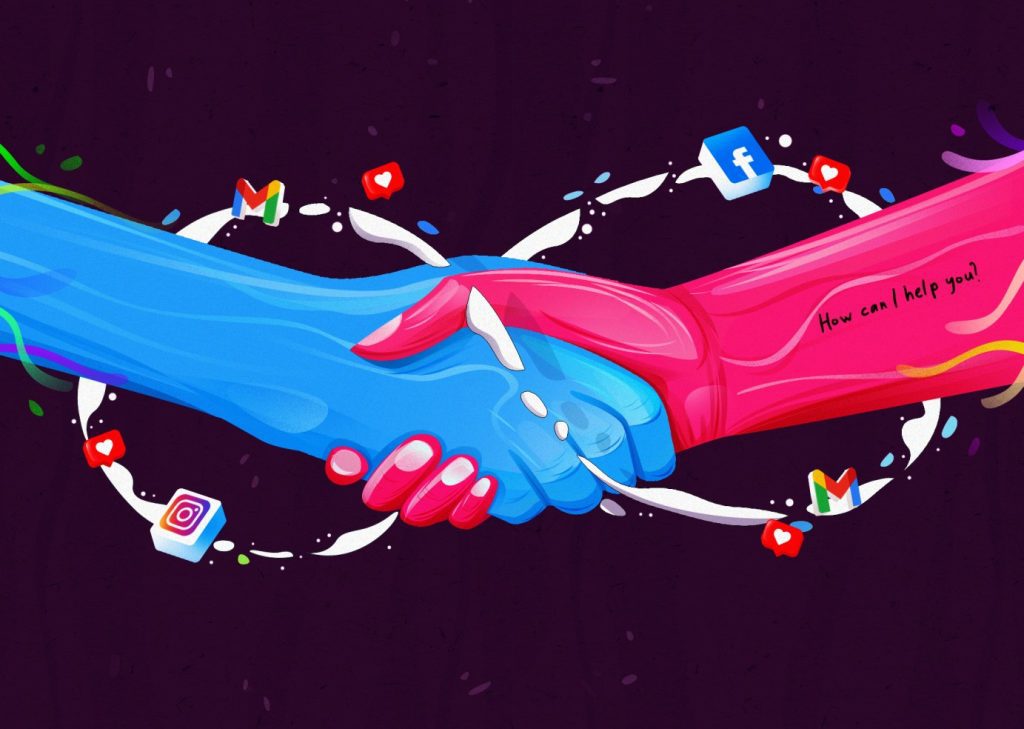“It’s a Match!”
When you see this message, your Dopamine and Oxytocin hits high right? Yes, I am going to talk about “Tinder” a popular app that takes advantage of your hormone rush. Over the years, Tinder has become one of the most favored applications worldwide. Its dynamic feature has helped it to grab the attention of its target audience instantly and become popular such that even those who have not used Tinder have at least heard of it. We all might be knowing someone who has currently created a profile and swiping, or someone who is already in a Tinder relationship.
To give you a brief on how Tinder originated and its story so far, let us check the history of the app. Tinder was instigated in September, 2012 in Los Angeles, California, by Sean Rad, Justin Mateen, and Jonathan Badeen, aiming to “be your dependable wingman—
”wherever you go, we will be there” – Tinder(2017)
It started off as a mobile social media application that is free of charge and available for all the Android, iOS and Windows mobile users.
To an extent, Tinder is successful in reinventing the dating fashion. It was able to transform the dating pattern into an endless virtual marketplace where singles could shop for each other or probably, it has turned dating into a minimal-effort deal. It asks its users their gender and sexual orientation to help locate nearby users who fit with their preferences while they sign up.


The “Matching” mechanism of Tinder
The dynamic nature of Tinder has increased its reach according to surveys. When signing up, Tinder users are asked for their gender and sexual orientation to help locate nearby users who fit with their preferences. They are also given the option to provide a short biography. The application creates a digital profile by using basic information from the user’s Facebook profile, like the first name, age, location and up to six pre-selected photos.
How the matching works is that the users can anonymously swipe right, if they are interested and swipe left, if they are not. When two people swipe right on their respective profiles, they are considered a match and can chat together in a private window.
Tinder gives the freedom to self-select their partners, unlike other online dating platforms that demand detailed surveys and old-fashioned forms. Users can filter across a list of profiles and choose their best partner themselves. It depends on the preset algorithms to pair potential matches based on their shared interests or the preferences they have stated, along by considering their ratings of the matches sent to them. Tinder’s algorithm gives a lot of weightage to the choices the users make while setting preferences. Distance, gender, and age preferences need to be balanced before Tinder shows a potential match.
With the arrival of mobile dating applications such as Tinder, the capability for geolocation – which permits users to ‘see’ other users that are nearby has opened new doors. Users are no longer required to employ pre-programmed computer algorithms to discover possible suitors. If they find another user within their area all they have to do is swipe right and if the person on the other side swipes right too, they are matched and can start messaging each other instantly.


How successful is Tinder?
Currently, Tinder is a success. With 20 billion matches to date, and now in more than 24 languages, Tinder is the world’s most popular app for meeting new people, we could see that it has met its triumph. It has subscribers around 6.7 million, as of 2020 and the total number of users are estimated at 66 million. It has more than 70 million global users every month, in 196 countries and there are more than 1.4 billion swipes per day. Considering all this data, there is no wonder in calling it “the world’s hottest app”. It is fruitful in sparking more than 26 million matches per day.
As the app strives to diversify its products and services, the company’s brand value has been enhanced to a great extent. Diversification helps Tinder to reach a wider customer base and penetrate new areas in the market. Tinder can track information about social network users to gather information and create the right mails for its users. Personalised attention, where the app targets its audience more specifically is the greatest secret behind their success and acceptance worldwide.
Conclusion
Regarding the strengths of the app, Tinder is counted amongst the leading mobile app providers for dating services and communication opportunities for users. The company has developed applications that have become extremely popular among customers, courtesy of the high demand for dating services today. Anyone, even those who don’t have good knowledge on using mobile applications, can use Tinder effectively. Its efficiency, gamification features and most importantly, the simplicity in its User Interface or app design, makes its User Experience show up compared to other competitive applications and websites in the online dating industry.


